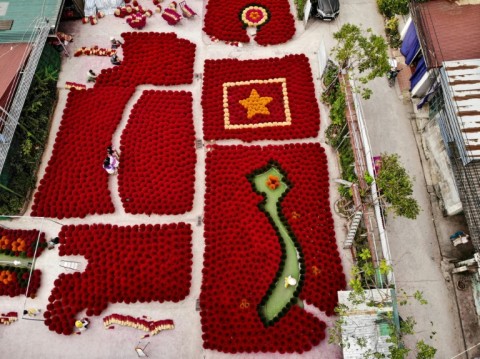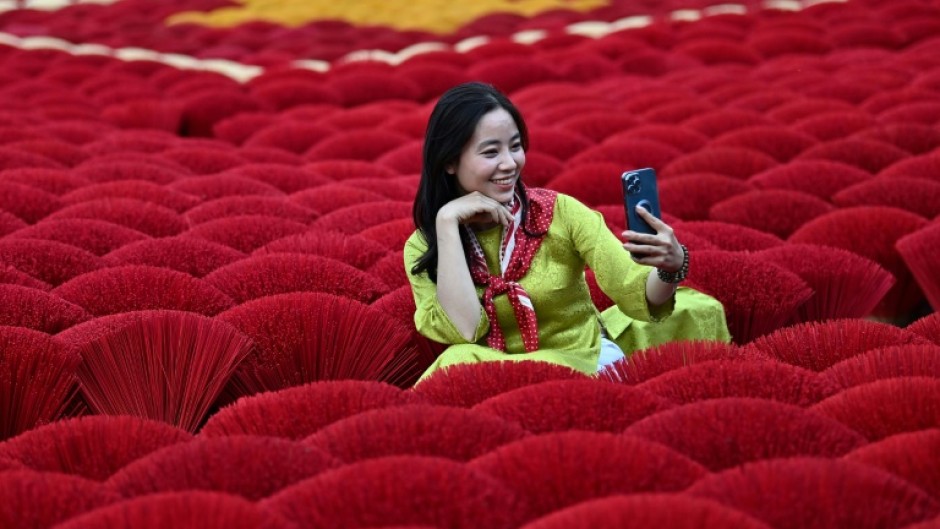HANOI - In a tiny village in northern Vietnam, Dang Thi Hoa ties up a bundle of freshly dried incense sticks ahead of Lunar New Year and watches a line of tourists waiting to pose for pictures.
Three generations of Dang Thi Hoa's family have been dyeing incense sticks scarlet red, or magenta pink, ahead of the new year celebrations -- known as Tet in Vietnam.
But Hoa, and many other families living and working in the "incense village" of Quang Phu Cau, now also make sticks in yellow, blue and green, catering to visitors eager to snap shots for Instagram.
In front of one village temple, hundreds of bundles of multi-coloured sticks were laid to dry in the sun -- arranged in the form of a giant Vietnamese map.
"Our village has become a hotspot for tourists," said Hoa, who has been crafting incense sticks for three decades.
The villagers make a healthy sum from the selfie snappers.
For 50,000 VND ($2), tourists can spend as long as they like taking pictures with a workshop's sticks -- which themselves cost just 50 cents for a pack of 20.

Quang Phu Cau, on the outskirts of Hanoi, is among several villages across Vietnam involved in the ancient incense stick trade, with many families living down its small alleys involved in the dying, drying or whittling down of the bamboo bark.
The full work sequence includes hacking down bamboo branches to feed into a whittling machine, dipping the thin strips into buckets of colourful dye, before leaving the sticks fanned out on the street like bouquets to air dry.
"I am proud of our family's traditional craft... and also feel happy as our village has become more well known," said Hoa.
"I am also earning more," she said, happily.

